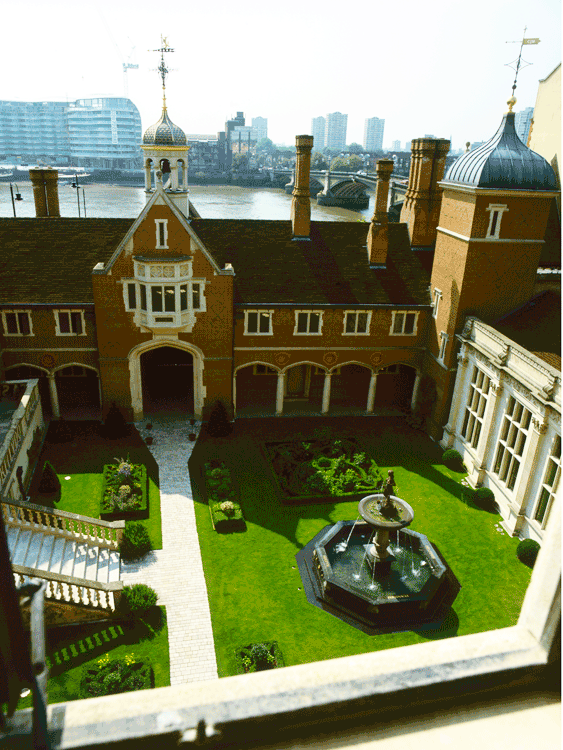
View from the North Wing facing south across the courtyard and the Thames beyond, London, United Kingdom
Chapel at Crosby Hall
London, UK
The Great Hall is the surviving original part of Crosby Hall, a medieval merchant’s mansion that was originally located on Bishopsgate in the City of London. Once home to the future Richard III, Sir Thomas More and several Lord Mayors of London, this rare survivor of the Great Fire of 1666 is now the only surviving example of a medieval City merchant’s house. It was moved and re-erected on the site of the gardens of Sir Thomas Moore’s Chelsea home on Cheyne Walk in 1909 and a series of buildings built around it, most of which have been demolished. The property became a private residence in the late 1980s and a team of specialists have created a new setting for the Hall with buildings and a courtyard that appear to date from the fifteenth and sixteenth centuries.
The New Chapel within The Great Hall is designed in the Perpendicular style, with the existing walls carefully built-out to incorporate stone details at lower levels and fibrous plaster details at the upper levels. The new internal windows in the eastern wall have stone tracery with back-lit stained glass. The floors throughout are laid with decorative encaustic tiles, with stone steps up to the Narthex, western chapels and altar. The ceiling is fan vaulted and made of fibrous plaster with the exception of the five main ribs, which are of stone.
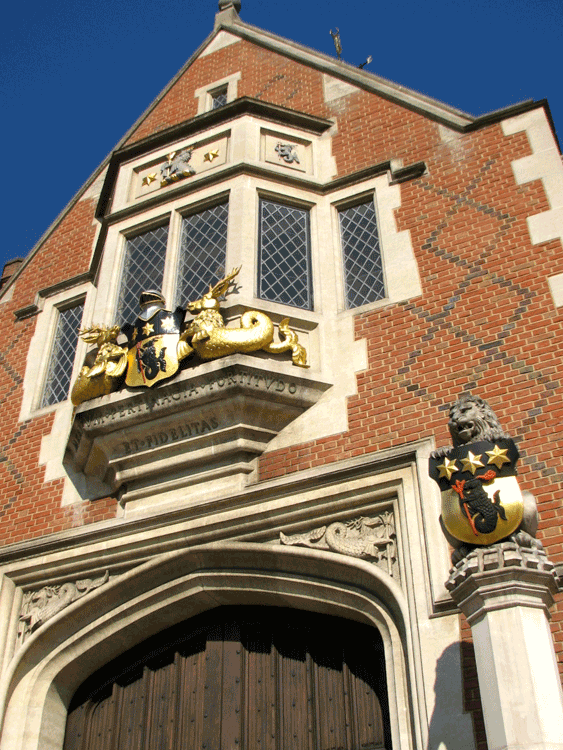
View of main entrance to Crosby Hall facing Cheyne Walk, London, United Kingdom
Chapel at Crosby Hall
London, UK
The Great Hall is the surviving original part of Crosby Hall, a medieval merchant’s mansion that was originally located on Bishopsgate in the City of London. Once home to the future Richard III, Sir Thomas More and several Lord Mayors of London, this rare survivor of the Great Fire of 1666 is now the only surviving example of a medieval City merchant’s house. It was moved and re-erected on the site of the gardens of Sir Thomas Moore’s Chelsea home on Cheyne Walk in 1909 and a series of buildings built around it, most of which have been demolished. The property became a private residence in the late 1980s and a team of specialists have created a new setting for the Hall with buildings and a courtyard that appear to date from the fifteenth and sixteenth centuries.
The New Chapel within The Great Hall is designed in the Perpendicular style, with the existing walls carefully built-out to incorporate stone details at lower levels and fibrous plaster details at the upper levels. The new internal windows in the eastern wall have stone tracery with back-lit stained glass. The floors throughout are laid with decorative encaustic tiles, with stone steps up to the Narthex, western chapels and altar. The ceiling is fan vaulted and made of fibrous plaster with the exception of the five main ribs, which are of stone.
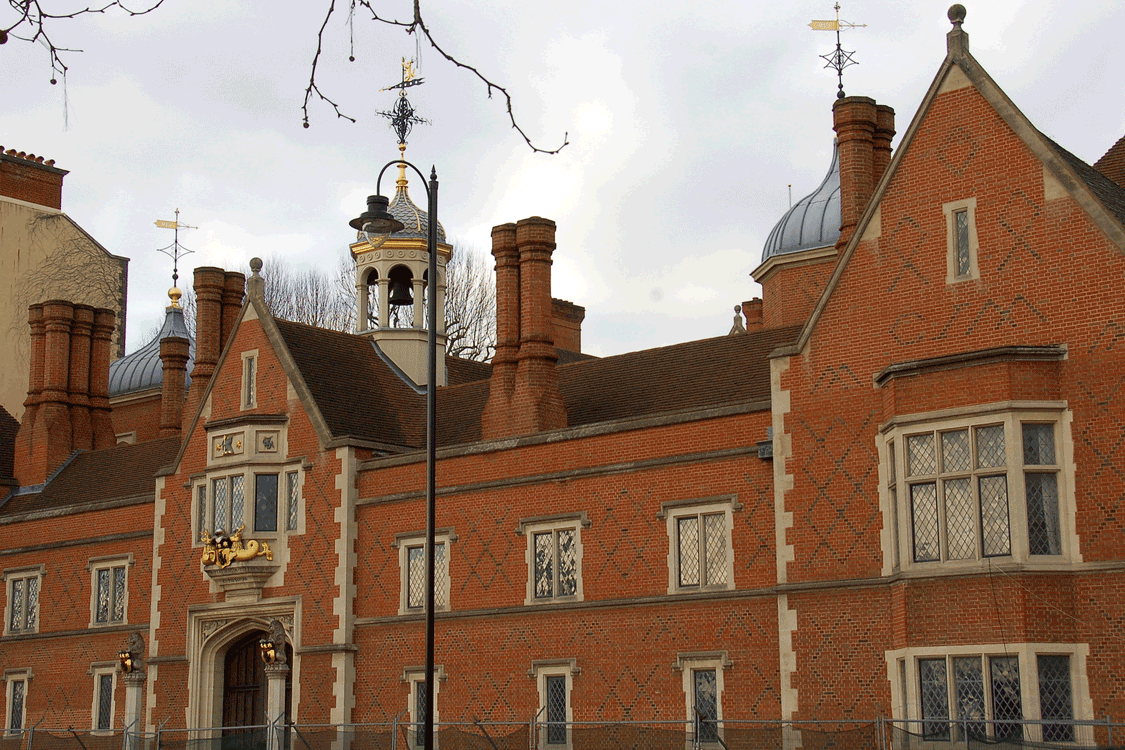
View of the South Wing at Crosby Hall seen from Cheyne Walk, London, United Kingdom
Chapel at Crosby Hall
London, UK
The Great Hall is the surviving original part of Crosby Hall, a medieval merchant’s mansion that was originally located on Bishopsgate in the City of London. Once home to the future Richard III, Sir Thomas More and several Lord Mayors of London, this rare survivor of the Great Fire of 1666 is now the only surviving example of a medieval City merchant’s house. It was moved and re-erected on the site of the gardens of Sir Thomas Moore’s Chelsea home on Cheyne Walk in 1909 and a series of buildings built around it, most of which have been demolished. The property became a private residence in the late 1980s and a team of specialists have created a new setting for the Hall with buildings and a courtyard that appear to date from the fifteenth and sixteenth centuries.
The New Chapel within The Great Hall is designed in the Perpendicular style, with the existing walls carefully built-out to incorporate stone details at lower levels and fibrous plaster details at the upper levels. The new internal windows in the eastern wall have stone tracery with back-lit stained glass. The floors throughout are laid with decorative encaustic tiles, with stone steps up to the Narthex, western chapels and altar. The ceiling is fan vaulted and made of fibrous plaster with the exception of the five main ribs, which are of stone.
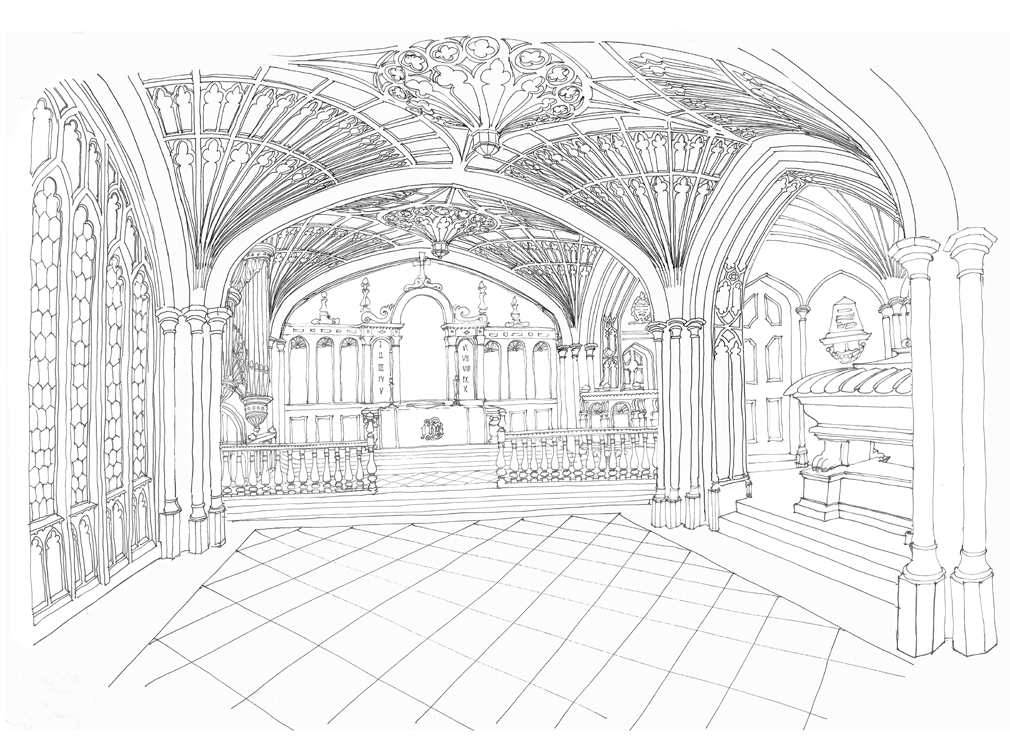
Perspective of the Chapel Nave at Crosby Hall, London, United Kingdom
Chapel at Crosby Hall
London, UK
The Great Hall is the surviving original part of Crosby Hall, a medieval merchant’s mansion that was originally located on Bishopsgate in the City of London. Once home to the future Richard III, Sir Thomas More and several Lord Mayors of London, this rare survivor of the Great Fire of 1666 is now the only surviving example of a medieval City merchant’s house. It was moved and re-erected on the site of the gardens of Sir Thomas Moore’s Chelsea home on Cheyne Walk in 1909 and a series of buildings built around it, most of which have been demolished. The property became a private residence in the late 1980s and a team of specialists have created a new setting for the Hall with buildings and a courtyard that appear to date from the fifteenth and sixteenth centuries.
The New Chapel within The Great Hall is designed in the Perpendicular style, with the existing walls carefully built-out to incorporate stone details at lower levels and fibrous plaster details at the upper levels. The new internal windows in the eastern wall have stone tracery with back-lit stained glass. The floors throughout are laid with decorative encaustic tiles, with stone steps up to the Narthex, western chapels and altar. The ceiling is fan vaulted and made of fibrous plaster with the exception of the five main ribs, which are of stone.
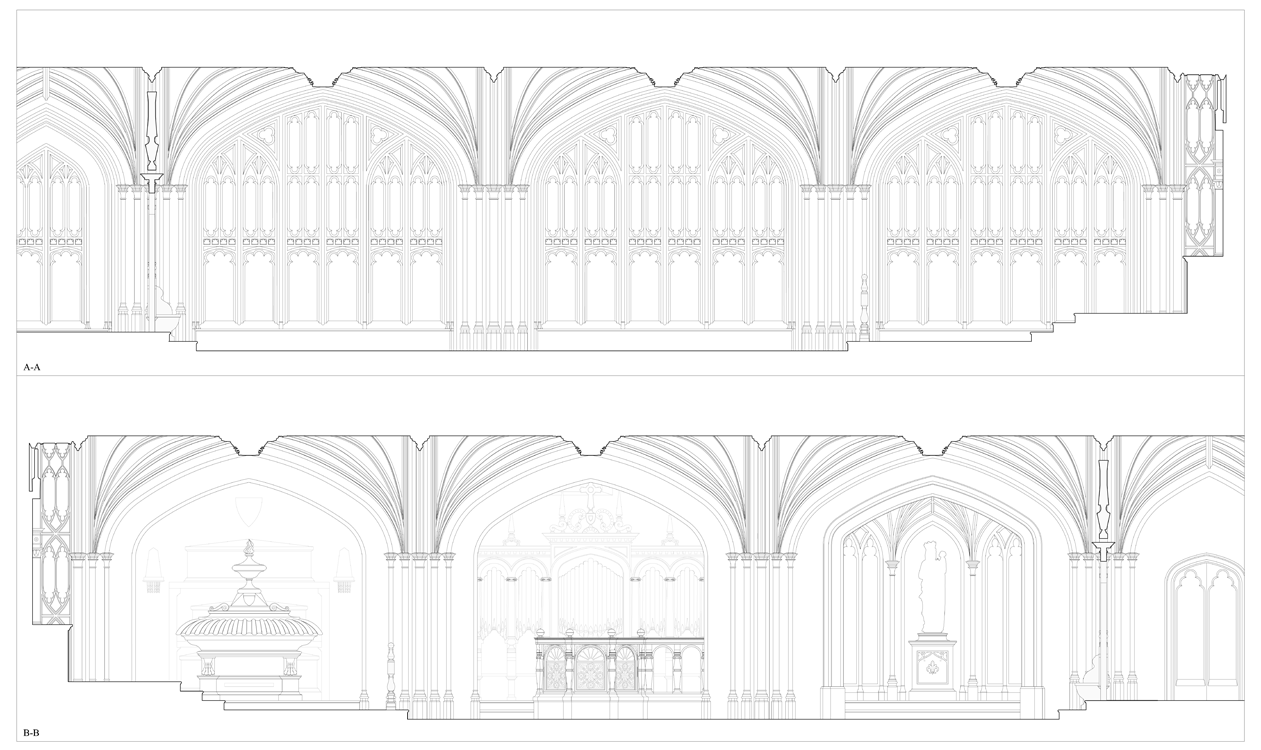
Section through the Chapel Nave at Crosby Hall, London, United Kingdom
Chapel at Crosby Hall
London, UK
The Great Hall is the surviving original part of Crosby Hall, a medieval merchant’s mansion that was originally located on Bishopsgate in the City of London. Once home to the future Richard III, Sir Thomas More and several Lord Mayors of London, this rare survivor of the Great Fire of 1666 is now the only surviving example of a medieval City merchant’s house. It was moved and re-erected on the site of the gardens of Sir Thomas Moore’s Chelsea home on Cheyne Walk in 1909 and a series of buildings built around it, most of which have been demolished. The property became a private residence in the late 1980s and a team of specialists have created a new setting for the Hall with buildings and a courtyard that appear to date from the fifteenth and sixteenth centuries.
The New Chapel within The Great Hall is designed in the Perpendicular style, with the existing walls carefully built-out to incorporate stone details at lower levels and fibrous plaster details at the upper levels. The new internal windows in the eastern wall have stone tracery with back-lit stained glass. The floors throughout are laid with decorative encaustic tiles, with stone steps up to the Narthex, western chapels and altar. The ceiling is fan vaulted and made of fibrous plaster with the exception of the five main ribs, which are of stone.